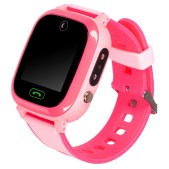The Ultimate Checklist for Buying a Student Laptop

Choosing the right laptop for a student can be a challenging task given the variety of options available in the market today. Whether it’s for attending online classes, completing assignments, or enjoying some downtime with movies and games, having a reliable laptop is essential. This guide will walk you through the key factors to consider when buying a student laptop this year to ensure you make an informed decision.
Performance and Processor
The performance of a laptop largely depends on its processor. For students, it’s important to choose a device with at least an Intel Core i5 or AMD Ryzen 5 processor to handle common tasks smoothly. These processors offer efficient multitasking capabilities without draining too much battery life, making them ideal for studying and everyday use.
Battery Life
Long battery life is crucial for students who attend classes throughout the day or study in places without easy access to power outlets. Look for laptops that offer at least 8 hours of battery life on a single charge. This ensures uninterrupted productivity whether you’re in class, at the library, or on the go.
Portability and Build Quality
Since students often carry their laptops between home, school, and other locations, portability is essential. Opt for lightweight models typically weighing under 4 pounds with durable build quality to withstand daily wear and tear. Additionally, consider laptops with compact screen sizes around 13-14 inches that balance usability and portability.
Storage Capacity
Adequate storage is necessary to save documents, projects, media files, and software applications. Solid State Drives (SSD) are preferred over traditional Hard Disk Drives (HDD) due to faster data access speeds which improve overall system responsiveness. A minimum of 256GB SSD storage is recommended; however if budget allows, upgrading to 512GB can provide extra space for future needs.
Display Quality and Connectivity Options
A clear display reduces eye strain during long study sessions; therefore look for laptops with Full HD (1920×1080) resolution screens offering good color accuracy and brightness levels. Also consider connectivity features including multiple USB ports (preferably USB-C), HDMI output for external displays or projectors, Wi-Fi 6 support for faster internet connections, as well as an audio jack.
Selecting the perfect student laptop requires balancing performance, portability, battery life, storage capacity,and connectivity features within your budget constraints. By using this ultimate checklist as your guide,this year’s students can confidently invest in devices that enhance their academic experience while providing versatility beyond schoolwork.
This text was generated using a large language model, and select text has been reviewed and moderated for purposes such as readability.











